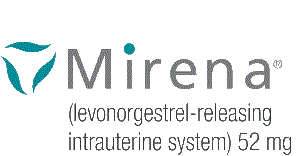What is Mirena?
Mirena is an intrauterine system (IUS), a small plastic t-shaped device that is placed in your uterus (womb) by a trained healthcare professional. It may have been prescribed to you for one or more of the following;
- Endometrial protection in Hormone replacement therapy (HRT) - Mirena can be used in conjunction with an oestrogen as part of a hormone replacement therapy (HRT) regimen to protect the lining of your womb for up to 4 years.
- Contraception - As a long-term and reversible method of contraception also known as a LARC (long-acting reversible contraception) for up to 8 years.
- Heavy menstrual bleeding (HMB) - Treatment for heavy menstrual bleeding (HMB) for up to 5 years
If symptoms do not return after 5 years of use, Mirena can be considered for continued use for up to 8 for HMB.
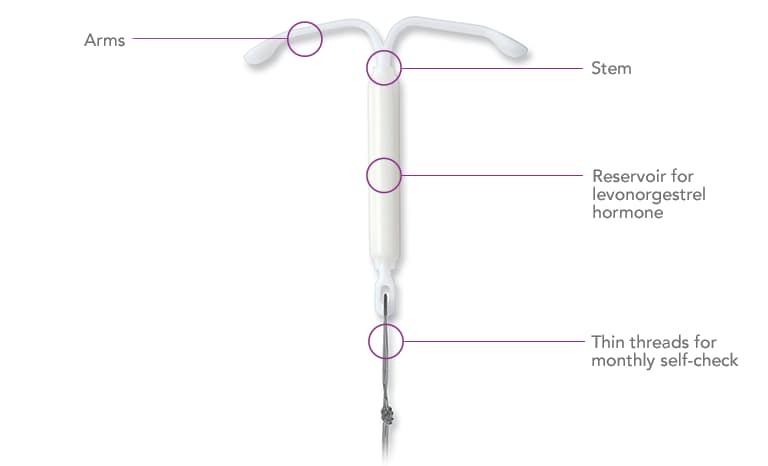
Facts about Mirena
- Mirena is a small, flexible, plastic T-shape with a small amount of hormone
- Mirena is placed in the uterus by a healthcare professional, once fitted you shouldn't even know its there.
- Mirena contains 52mg of a single hormone called levonorgestrel, a type of progestin, that is often used in birth control pills.
- Because Mirena slowly releases continuous low dose of levonorgestrel into your uterus, only small amounts of hormone enter your bloodstream.
- Mirena does not contain oestrogen and does not affect normal function of your ovaries.
- Should you change your mind, it can be removed at any time.
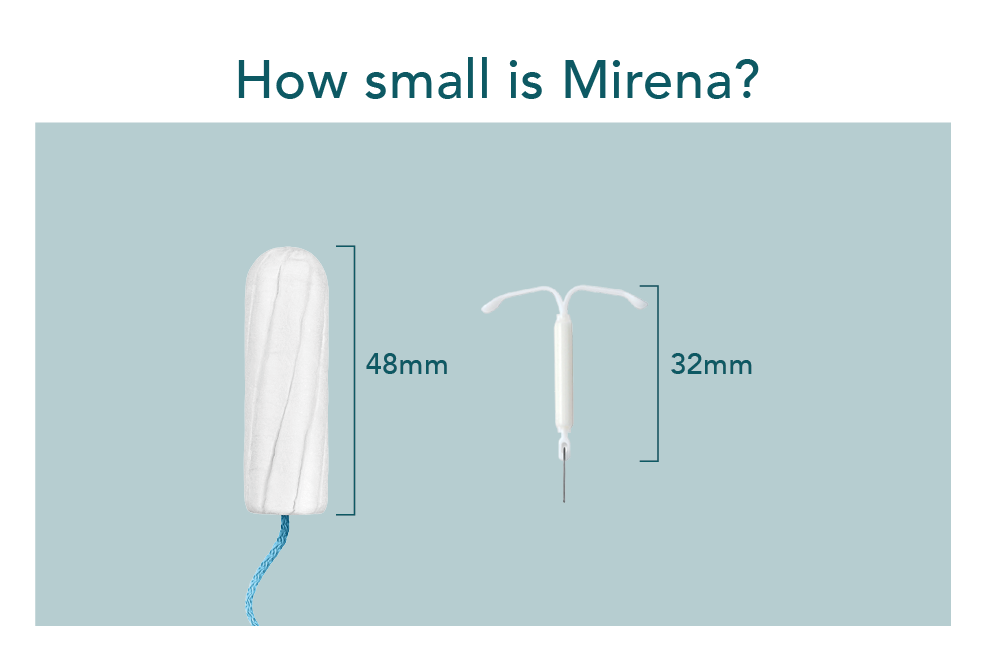
How does Mirena work?
Mirena slowly releases a small amount of hormone, a progesterone called levonorgestrel into your uterus.
As Mirena is placed in the womb, it works right where it is needed and only small amounts of hormones will enter your bloodstream. Ovulation (the release of an egg from the ovaries) usually continues while using Mirena.
The Mirena can be removed sooner if you wish, you can find out about the removal of a Mirena here.
How does Mirena prevent pregnancy?
The hormone released into your uterus by Mirena prevents pregnancy by:
- Thickening cervical mucus, preventing sperm from entering the uterus
- Inhibiting sperm movement so its more difficult to reach and fertilize an egg
- Thinning the lining of your uterus, making it less likely for an egg to attach to the uterus
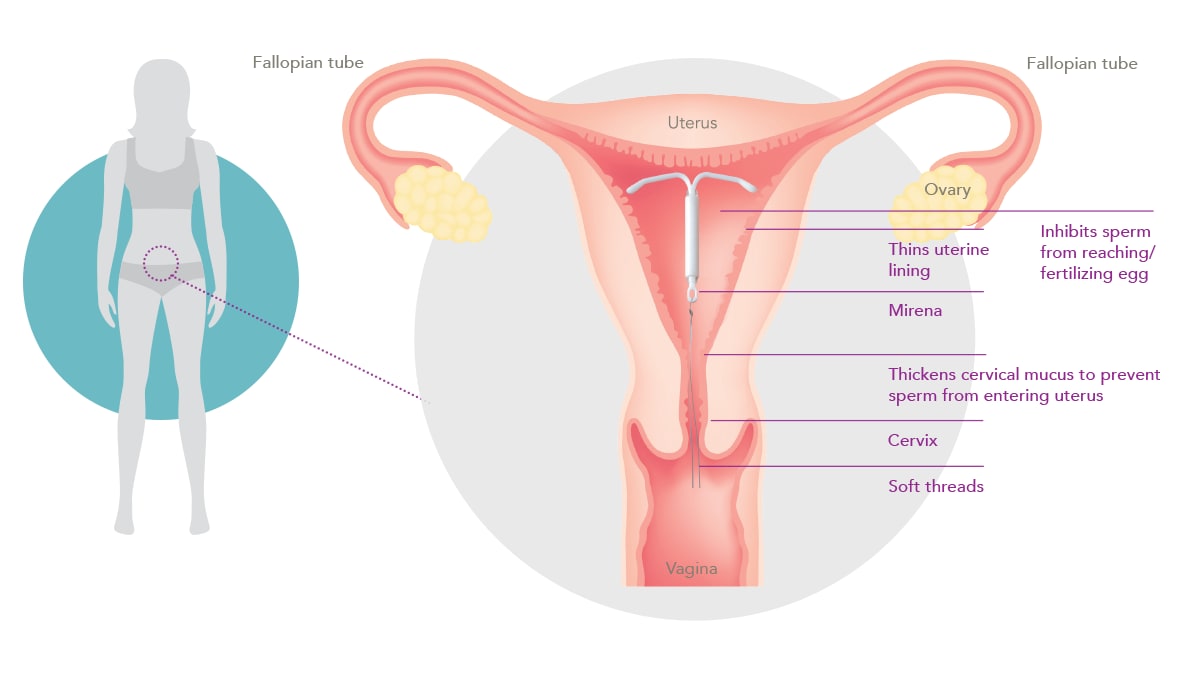
How does Mirena treat HMB?
The hormone released into your uterus by Mirena treats heavy menstrual bleeding by:
- Thinning the lining of your uterus, which reduces blood loss during during menstruation when the lining of the womb is shed
- Mirena reduces blood loss by up to 96% after 6 menstrual cycles
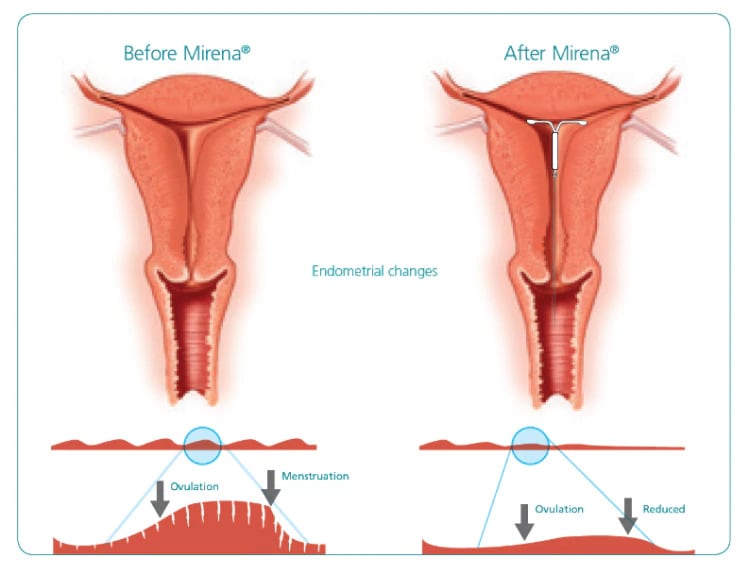
What does Mirena do in HRT?
Mirena can be used in conjunction with oestrogen as part of a hormone replacement therapy (HRT) regimen.
Mirena provides protection to the lining of your womb (endometrium) during HRT. You may hear your healthcare professional refer to this as endometrial protection.
The hormone released into your uterus by Mirena provides endometrial protection by:
- Thinning the lining of your womb, also known as the endometrium
Learn more about Mirena as part of HRT
Is Mirena suitable for me?
Mirena may be suitable for a variety of women, regardless of whether you've had a baby or not It's suitable for women of different reproductive ages, including women who are going through the menopause.
Explore more
PP-MIR-GB-0186 January 2024
INDICATION FOR MIRENA
Mirena® (levonorgestrel-releasing intrauterine system) is a hormone-releasing IUS that helps prevent pregnancy for up to 8 years. Mirena also treats heavy periods for up to 5 years in women. If symptoms do not return after five years of use, Mirena can be considered for continued use for up to eight years. Mirena provides endometrial protection for up to 4 years.
IMPORTANT SAFETY INFORMATION
- If you have a pelvic or genital infection, get infections easily, or have certain cancers, don't use Mirena. Less than 1% of users get a serious pelvic infection called pelvic inflammatory disease (PID).
- If you have persistent pelvic or stomach pain, or excessive bleeding after placement, tell your healthcare provider (HCP). If Mirena comes out, call your HCP and avoid intercourse or use non-hormonal back-up birth control (such as condoms or spermicide). Mirena may go into or through the wall of the uterus and cause other problems.
- Pregnancy while using Mirena is uncommon but can be life threatening and may result in loss of pregnancy or fertility.
- Ovarian cysts may occur but usually disappear.
- Bleeding and spotting may increase in the first 3 to 6 months and remain irregular. Periods over time usually become shorter, lighter, or may stop.
Mirena does not protect against HIV or STIs.
Only you and your HCP can decide if Mirena is right for you. Mirena is available by prescription only.
For important risk and usage information about Mirena, please see Full Patient Information Leaflet
Reporting adverse events and quality complaints
If you get any side effects, talk to your doctor, pharmacist or nurse. This includes any possible side effects not listed in the package leaflet. You can also report side effects directly via the yellow card scheme at www.mhra.gov.uk/yellowcard.
By reporting side effects, you can help provide more information on the safety of this medicine.

